Gull-billed Tern Gelochelidon nilotica
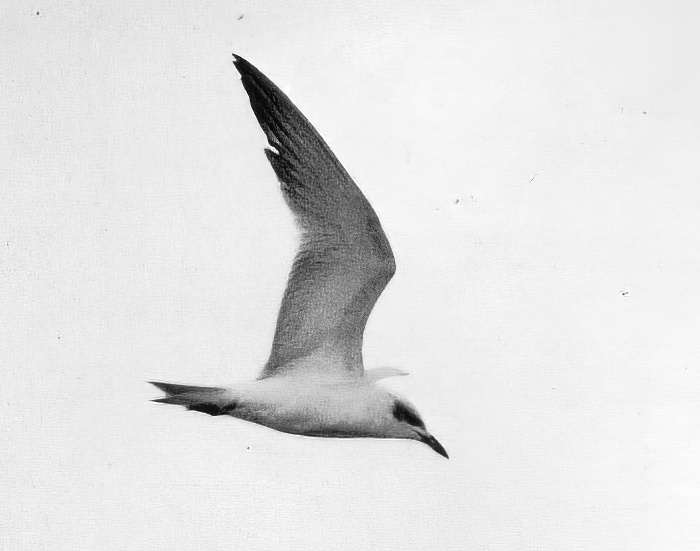
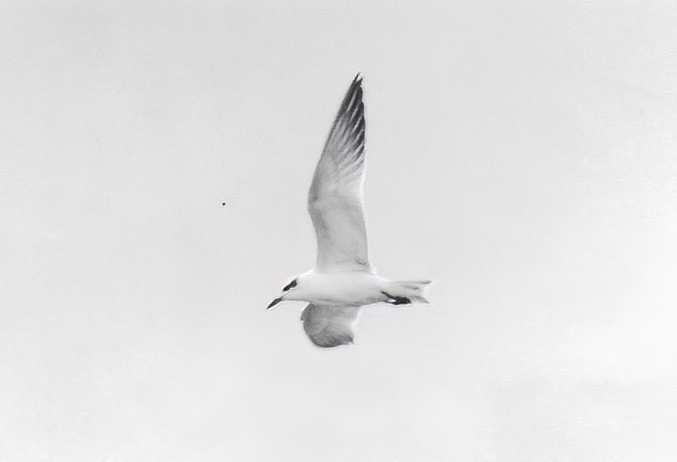
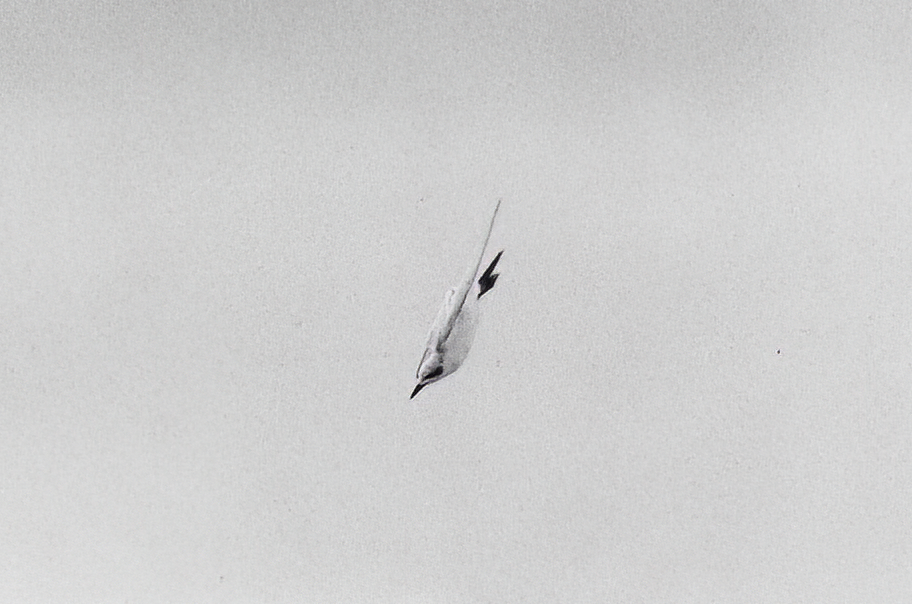
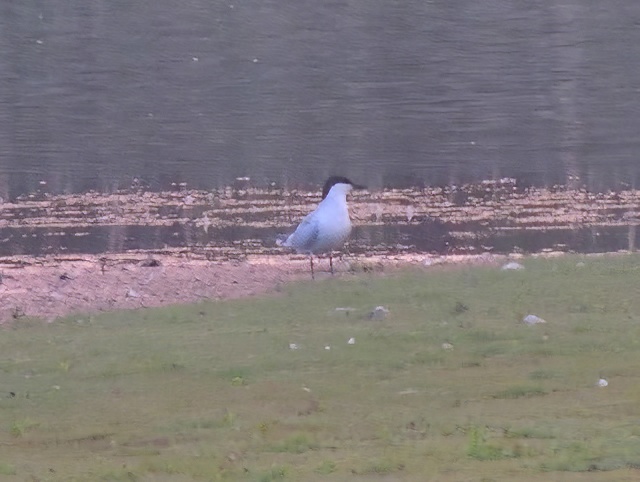
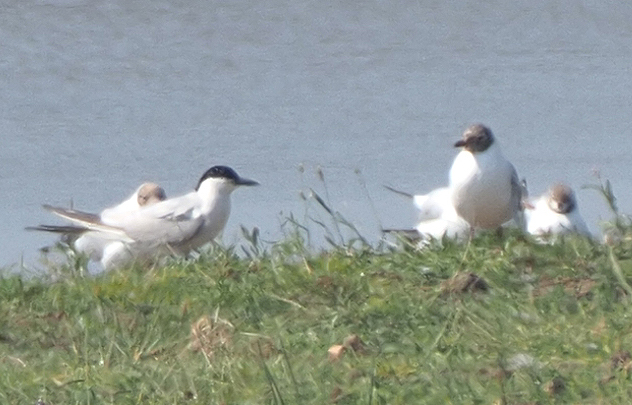
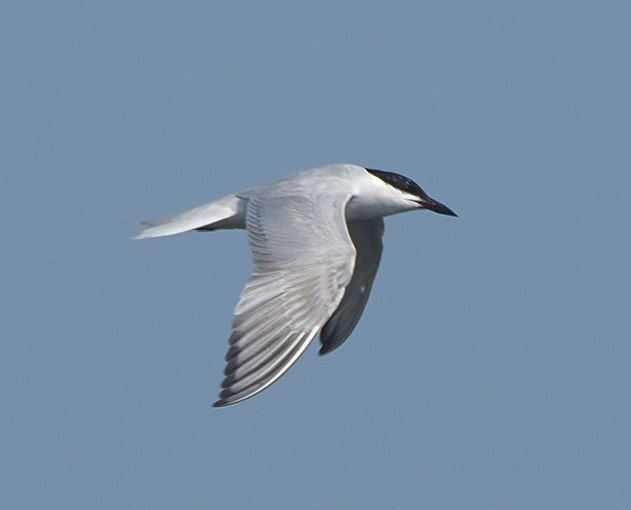
Gull-billed Terns: left, Kirkby GP June 18th 2013 (James Siddle); centre/right, Cress Marsh Jul 22nd 2022 (Chris Atkin).
The first Gull-billed Tern record was at Gibraltar Point in August 1967. Four more followed 1969-1978, with the immature bird in 1972 staying for nearly four weeks, unusual for this notorious wanderer. The description of the 1972 bird to BBRC noted head as adult winter with a black ‘mask’ and a darkish band extending from the base of the primaries along the centre of the wing to the outer secondaries presumed to indicate a 2CY bird. There followed a very long wait until a sixth in June 2013 present for one afternoon until dusk but gone by the next morning. The seventh record was of a well-watched and photographed bird present intermittently at Gibraltar Point NNR in August 2020. The two most recent records (that from 2022 awaiting ratification by BBRC) were good finds at Cress Marsh and Baston & Langtoft GP making it three years in a row in which this species has been found in the county.
With 331 British records 1950-2020 the average number of records per year is around 3-4 per year, but hardly ever an easy bird to pin down.
| Site | First date | Last date | Count | Notes |
| Gibraltar Point NNR | 30/08/1967 | - | 1 | |
| Donna Nook | 04/08/1969 | - | 1 | Adult |
| Covenham Reservoir | 16/09/1972 | 14/10/1972 | 1 | 2CY+ |
| Witham Mouth | 07/09/1975 | - | 1 | |
| Trusthorpe | 03/09/1978 | - | 1 | Adult |
| Kirkby GP | 18/06/2013 | - | 1 | Adult |
| Gibraltar Point NNR | 18/08/2020 | 19/08/2020 | 1 | 2CY+/adult |
| Cress Marsh | 22/07/2021 | - | 1 | 2CY+ |
| Baston and Langtoft GP | 19/07/2022 | 21/07/2022 | 1 | 2CY+ |
Finder’s report: Gull-billed Tern at Gibraltar Point, August 30th, 1967, first county record.
by M. L. Chalmers and D. Elias.
Note: this account is taken from the original Rarities Committee submission by Mike Chalmers. The rarities Committee at the time noted that 1967 was a record year with 17 records from ten counties and one island group. Three in spring were not exceptional, but a wide scatter in late August and September pointed to an unusual westward deflection from the continental seaboard. Three in Norfolk were seen during long sea-watches, which revealed a large immigration from the North Sea of ducks, waders, gulls, and terns. The period 1958-67 saw a total of about 73 records, involving over 80 individuals. The RC also noted that Gull-billed Tern submissions suffer from rather a high proportion of rejections, but, as Sandwich Terns Sterna sandvicensis* set several traps for the unwary, the committee has to be particularly cautious. Sound advice, still applicable today!
*Sandwich Tern is now placed in genus Thalasseus with the other “crested” terns (Lesser Crested, T. bengalensis; Greater Crested, T. bergii; Chinese Crested, T. bernsteini; Elegant, T. elegans; and Royal, T. maximus.)
Circumstances
This bird was seen at 2.45 pm, flying steadily along the shore in a southerly direction at about 4 ft. above the water. It was viewed from approximately 100 ft. with 7 x 50 and 6 x 30 binoculars. The attention of both observers was immediately drawn to the unusual ‘gull-like’ flight and heavy black bill. The following description was compiled from field notes written at the time.
Weather conditions at the time were cloudy, but bright with the light from behind the observers. Wind was SW, light to moderate. Visibility was good.
Description
General appearance – larger than ‘Comic’ terns and approximately the same size as a Sandwich Tern, both of which were nearby for comparison. Its most striking feature was its flight, which was gull-like and leisurely, as opposed to the faster wing-beating of the other terns. The wings appeared broader than those of the other terns, the general effect being of a heavier, more bulky-bodies bird. No call was heard.
Upperparts – tail was not deeply forked and lacked the long streamers of the ‘Comic’ terns. Upperparts were pale grey with a slightly mottled effect on the wing coverts. The head was completely capped black, the cap extending well back on to the nape, with no sign of a crest (all Sandwich Terns observed had at least some white on the forehead).
Bare parts – one very distinctive feature of the bird was the heavy, all black bill. This was quite unlike that of the Sandwich Terns, being slightly shorter and very much deeper, and lacked the horn coloured tip of the latter. The deep bill made the forehead appear only slightly sloping, thus giving the crown a rather flat appearance.
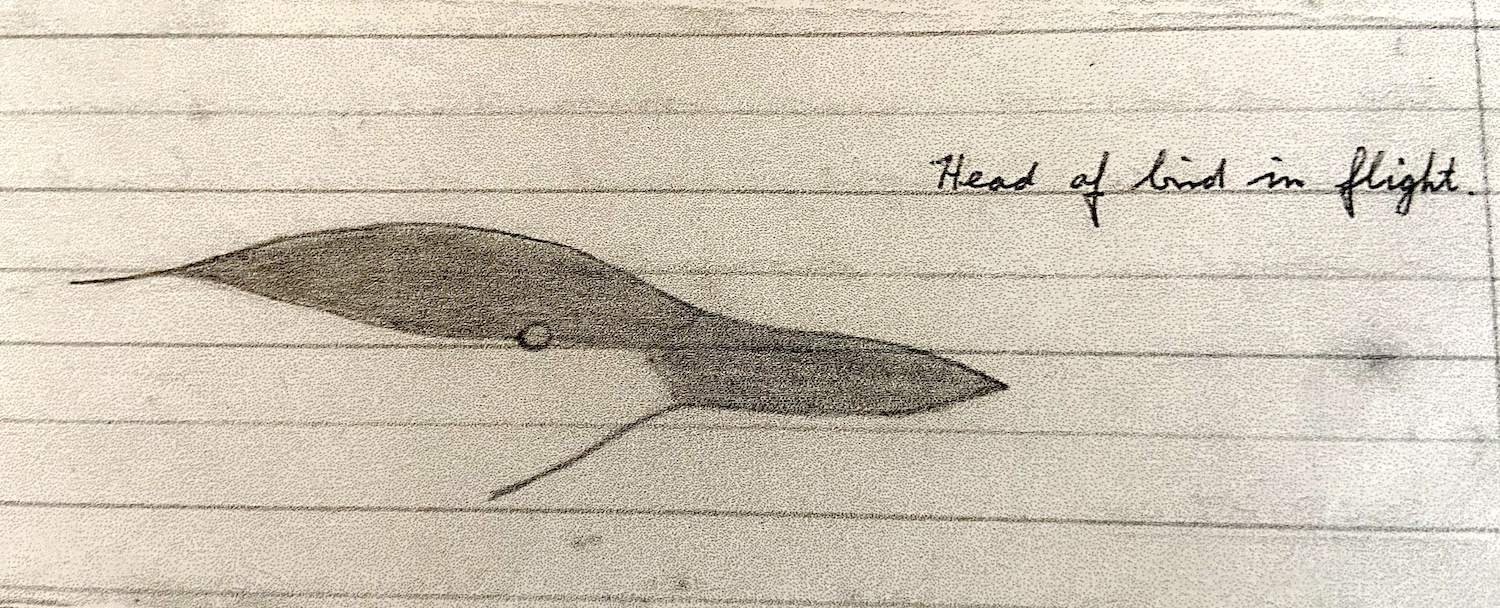
Sketch of Gull-billed Tern head from the original RC submission (M. L. Chalmers / D. Elias).
(Account as per new Birds of Lincolnshire (2021), included September 2022)

